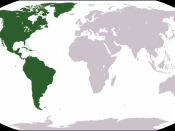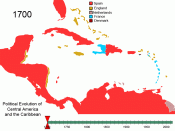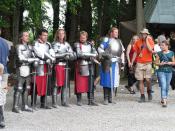The Caribbean is a region of the Americas comprised of more than 7,000 islands, and the area is home to a great diversity of peoples and cultures. Interestingly, "the region comprises one culture area in which common factors have forged a common way of looking at life, the world, and their place in the scheme of things" (Knight, p. xi). The differences in beliefs, values, and attitudes shared by the diverse members of this region are significant and noteworthy.
In his history, Franklin W. Knight begins by exploring the Caribbean prior to 1492. The indigenous population of the Caribbean likely did not exceed three-quarters of a million, and were comprised of three distinct groups: the Ciboney, the Taino, and the Carib. The history of this period is not recorded in books but, as Knight points out, is recorded in a multitude of other ways. These include pottery, paintings, statues, sculptures, tools, and buildings.
This archeological evidence offers great insight into the pre-history of the region.
Much of the history of this time period may be derived by Christopher Columbus' logs and observations. Knight explains that this "history" is biased by Columbus' own perceptions, values, and beliefs and thus may offer inaccuracies. He describes the manner in which the Spanish conquered the peoples and the lands of the Caribbean. One can sense the animosity that must have prevailed at the time between factions of the Spaniards and the indigenous inhabitants of the area.
Knight describes how the Spaniards spread far throughout the Caribbean. The Dutch, British, French, and others were powerful forces to be reckoned with and, by the end of the seventeenth century, Spain had clearly lost its dominant position in the Caribbean. Of course, the political landscape was also changing on a global scale, as well. Spain's position...


